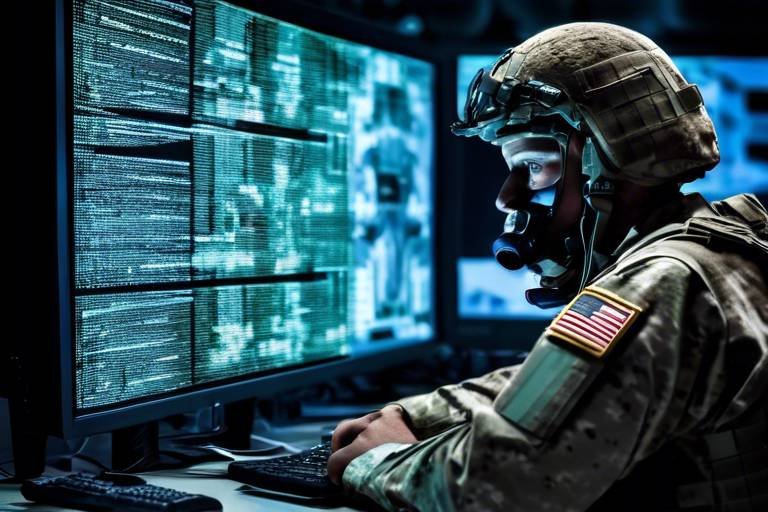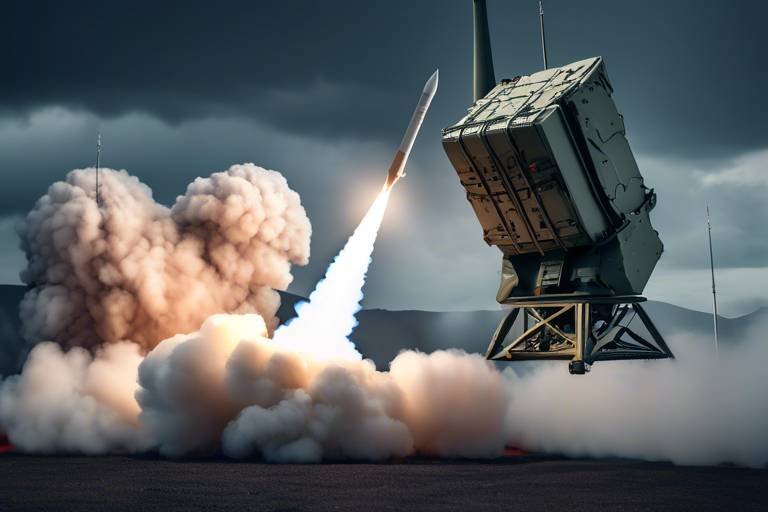How Advanced Sensors are Changing Modern Warfare
In today's rapidly evolving battlefield, advanced sensor technology stands at the forefront of military innovation, fundamentally reshaping the way wars are fought. Imagine a world where soldiers can detect threats before they even become visible, where data flows seamlessly between units, and where decisions are made in the blink of an eye. This is not science fiction; it's the reality of modern warfare. As we delve deeper into the transformative impact of these technologies, we will uncover how they enhance situational awareness, improve operational efficiency, and ultimately save lives.
The journey of sensor technology has been nothing short of remarkable. From rudimentary devices that could barely detect movement to sophisticated systems capable of analyzing vast amounts of data in real-time, the evolution has been driven by necessity. Early military sensors were primarily mechanical and analog, relying on simple principles of physics. However, the introduction of digital technology in the late 20th century marked a turning point. Sensors became more precise, reliable, and capable of integrating with other systems. Today’s advanced sensors utilize cutting-edge technologies such as machine learning and artificial intelligence, allowing for unprecedented levels of data analysis and interpretation.
Advanced sensors come in various forms, each designed to fulfill specific roles in the chaotic environment of warfare. Some of the most notable types include:
- Radar Sensors: These sensors use radio waves to detect and track objects, providing critical information about enemy movements.
- Infrared Sensors: These sensors detect heat signatures, making them invaluable for identifying hidden targets, especially at night.
- Acoustic Sensors: Utilizing sound waves, these sensors can identify the location of enemy artillery or vehicles, enhancing situational awareness.
Each type of sensor plays a vital role in enhancing the military's ability to respond to threats swiftly and effectively, ensuring that troops are always one step ahead.
The integration of advanced sensors with autonomous systems—like drones and unmanned ground vehicles—has revolutionized reconnaissance and combat capabilities. Imagine a drone flying over enemy territory, equipped with a suite of sensors that can gather intelligence without putting a pilot at risk. This combination allows for a level of operational flexibility that was previously unimaginable. Drones can relay real-time data back to command centers, enabling instant analysis and decision-making. As a result, military forces can conduct missions with greater precision and lower risk to personnel.
One of the most significant advantages of advanced sensors is their ability to process and analyze data in real-time. In modern warfare, time is of the essence. The faster commanders can interpret data, the quicker they can make informed decisions. Advanced sensors streamline this process by providing actionable intelligence almost instantaneously. For example, when a radar sensor detects an incoming missile, it can trigger a series of automated responses, from alerting personnel to initiating defensive measures. This capability not only enhances operational efficiency but also significantly increases the chances of mission success.
Despite their numerous advantages, advanced sensors are not without challenges. Issues such as cybersecurity threats pose significant risks, as hacking into sensor systems can lead to catastrophic failures in military operations. Additionally, environmental factors—like weather conditions and terrain—can impact sensor performance. For instance, heavy rain can hinder radar effectiveness, while dense foliage can obstruct infrared sensors. Understanding these limitations is crucial for military strategists as they incorporate advanced sensors into their operations.
Advanced sensor data plays a pivotal role in shaping military strategy. Accurate intelligence is the backbone of effective tactical decisions and long-term planning. By leveraging real-time data, military leaders can identify patterns, predict enemy movements, and allocate resources more efficiently. This data-driven approach allows for more adaptable strategies, enabling forces to respond to dynamic battlefield conditions. The integration of sensor technology into military planning marks a significant shift from traditional methods, emphasizing the importance of agility and foresight in modern warfare.
As with any powerful technology, the deployment of advanced sensors raises ethical questions. Concerns regarding privacy and the potential for misuse in combat scenarios are at the forefront of discussions surrounding military sensor technology. For instance, the ability to surveil enemy movements can inadvertently lead to civilian casualties if not carefully managed. It is essential for military leaders to navigate these ethical dilemmas thoughtfully, ensuring that advanced sensors are used responsibly and in accordance with international laws.
Looking ahead, the future of sensor technology in warfare is filled with potential. As advancements continue to emerge, we can expect to see even more sophisticated systems that integrate seamlessly with artificial intelligence and machine learning. These technologies will likely enhance not only the accuracy of data but also the speed at which it is processed. This evolution will redefine military strategies and capabilities, making it imperative for military organizations to stay ahead of the curve.
- What are advanced sensors? Advanced sensors are sophisticated devices that detect and analyze data from the environment, significantly enhancing military situational awareness and operational efficiency.
- How do advanced sensors improve decision-making in warfare? By providing real-time data and actionable intelligence, advanced sensors allow military leaders to make informed decisions quickly, adapting strategies to changing battlefield conditions.
- What challenges do advanced sensors face? Challenges include cybersecurity threats, environmental limitations, and ethical considerations regarding privacy and potential misuse.

The Evolution of Sensor Technology
Sensor technology has come a long way since its inception, evolving from rudimentary devices to sophisticated systems that play a crucial role in modern warfare. In the early days of military technology, sensors were primarily mechanical in nature, relying on physical movement to detect changes in the environment. Think of them as the early warning systems that were more akin to a canary in a coal mine than the high-tech tools we see today.
As we moved through the 20th century, the advent of electronic sensors marked a significant turning point. Radar technology emerged during World War II, revolutionizing the way military forces detected enemy aircraft and ships. This was a game-changer, allowing for greater situational awareness and strategic planning. The ability to see beyond the horizon was no longer a dream; it became a reality that shaped the outcome of battles.
Fast forward to the late 20th and early 21st centuries, and we witness the rise of digital sensors. These devices are not only capable of detecting a wider range of stimuli but can also process vast amounts of data in real-time. For instance, infrared sensors can detect heat signatures, making them invaluable for identifying enemy positions even in complete darkness. Similarly, acoustic sensors can pick up sounds from great distances, providing insights into troop movements and artillery fire.
One of the most remarkable advancements in sensor technology is the integration of artificial intelligence (AI). This fusion has enabled sensors to not only gather data but also analyze it, providing actionable intelligence at an unprecedented speed. Imagine having a soldier equipped with a sensor that can instantly interpret incoming data and suggest tactical moves—this is not science fiction; it’s the reality of modern warfare.
Moreover, the miniaturization of sensors has allowed for their deployment in a variety of platforms, from drones to infantry gear. This versatility means that sensors are no longer confined to large military installations; they can be embedded in small devices that operate in the field, enhancing the capabilities of ground troops. The proliferation of Internet of Things (IoT) technologies has further accelerated this trend, enabling seamless communication between various sensor systems.
To illustrate the evolution of sensor technology, consider the following table that highlights key developments over the decades:
| Era | Technology | Key Features |
|---|---|---|
| WWII | Radar | Detection of aircraft and ships |
| 1970s | Infrared Sensors | Night vision and heat detection |
| 1990s | Acoustic Sensors | Sound detection for troop movements |
| 2000s | AI-Integrated Sensors | Real-time data analysis and decision support |
| Present | IoT Sensors | Interconnected devices for enhanced situational awareness |
The evolution of sensor technology is not just a story of technical advancements; it’s a narrative of how these innovations have fundamentally changed the landscape of warfare. As we look forward, the question remains: what will the next generation of sensors look like, and how will they redefine our understanding of conflict?
- What are advanced sensors? Advanced sensors are sophisticated devices that detect and analyze various environmental stimuli, providing critical information for military operations.
- How has sensor technology evolved? Sensor technology has evolved from mechanical devices to electronic systems, and now to AI-integrated and IoT-enabled sensors, enhancing their functionality and effectiveness in warfare.
- What role do sensors play in modern warfare? Sensors enhance situational awareness, improve reconnaissance capabilities, and support real-time decision-making on the battlefield.
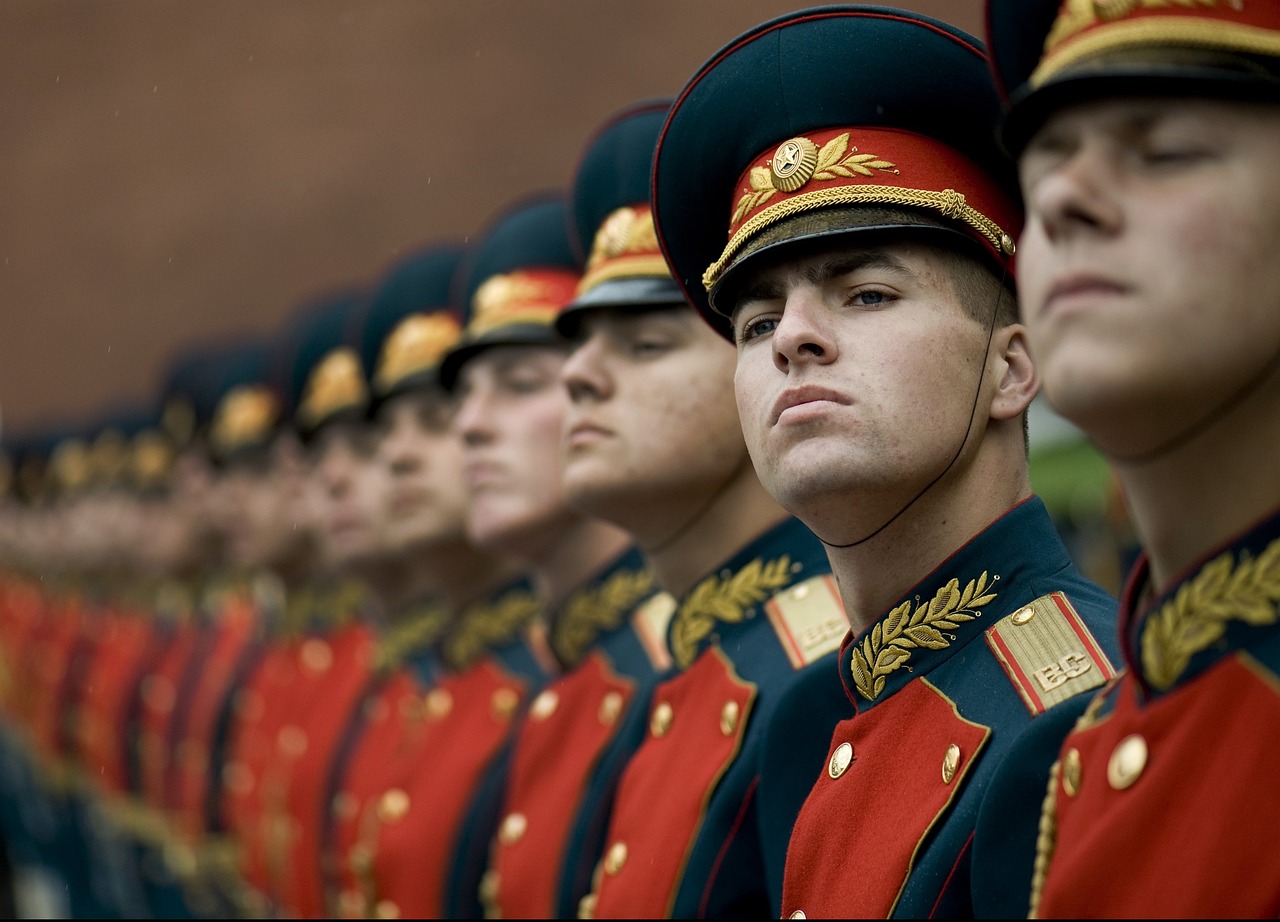
Types of Advanced Sensors in Warfare
In the rapidly evolving landscape of modern warfare, advanced sensors play a crucial role in ensuring military forces maintain a tactical edge. These sensors are not just high-tech gadgets; they are the eyes and ears of the battlefield, providing real-time data and enhancing situational awareness. From radar systems that can detect incoming threats to infrared sensors that allow for night vision, the variety of sensors available today is astounding. Each type has its unique capabilities and functions, contributing to a comprehensive understanding of the operational environment.
One of the most prominent types of advanced sensors is radar technology. Radar systems use radio waves to detect and track objects, making them essential for identifying enemy aircraft and missiles. Modern radar systems are incredibly sophisticated, capable of distinguishing between different types of targets and even identifying stealth technology. This capability is vital in preventing surprise attacks and ensuring air superiority.
Another critical category is infrared sensors, which detect heat emitted by objects. These sensors are invaluable for night operations, as they allow military forces to see in total darkness. Imagine a soldier navigating through a dense forest at night; with infrared sensors, they can spot enemy movements and potential ambushes that would otherwise remain hidden. This technology is not limited to ground troops; aircraft and drones equipped with infrared sensors can conduct surveillance and reconnaissance missions with unparalleled effectiveness.
Acoustic sensors also play a significant role in modern warfare. These sensors pick up sound waves, allowing military forces to detect enemy movements or even pinpoint the location of artillery fire. For example, in a combat scenario, an acoustic sensor could provide critical information about the direction and distance of incoming fire, enabling troops to respond swiftly and accurately. The integration of these sensors into a comprehensive battlefield management system can greatly enhance operational efficiency.
Moreover, electro-optical sensors combine traditional camera technology with advanced processing capabilities. These sensors can capture high-resolution images and video, providing detailed visual information about the battlefield. They are often used in drones and surveillance aircraft, allowing for real-time monitoring of enemy positions and movements. The ability to analyze this visual data quickly can mean the difference between success and failure in military operations.
As we consider the types of advanced sensors in warfare, it's essential to recognize their interconnectedness. Many modern systems combine multiple sensor types to create a multi-domain awareness capability. For instance, a drone might use radar, infrared, and electro-optical sensors simultaneously to gather comprehensive intelligence. This fusion of data enables commanders to make informed decisions based on a holistic view of the battlefield.
In summary, the types of advanced sensors in warfare are diverse and continually evolving. From radar and infrared to acoustic and electro-optical systems, each plays a vital role in modern military operations. As technology advances, we can expect even more innovative sensor solutions that will further transform the dynamics of warfare.
- What are advanced sensors in warfare?
Advanced sensors are high-tech devices used by military forces to gather data about the battlefield, including enemy movements and environmental conditions. - How do radar systems work?
Radar systems emit radio waves that bounce off objects, allowing them to detect and track targets such as aircraft and missiles. - What is the role of infrared sensors?
Infrared sensors detect heat emitted by objects, enabling visibility in low-light conditions and enhancing night operations. - Can multiple sensors be integrated?
Yes, many modern military systems integrate different types of sensors to provide a comprehensive view of the battlefield.
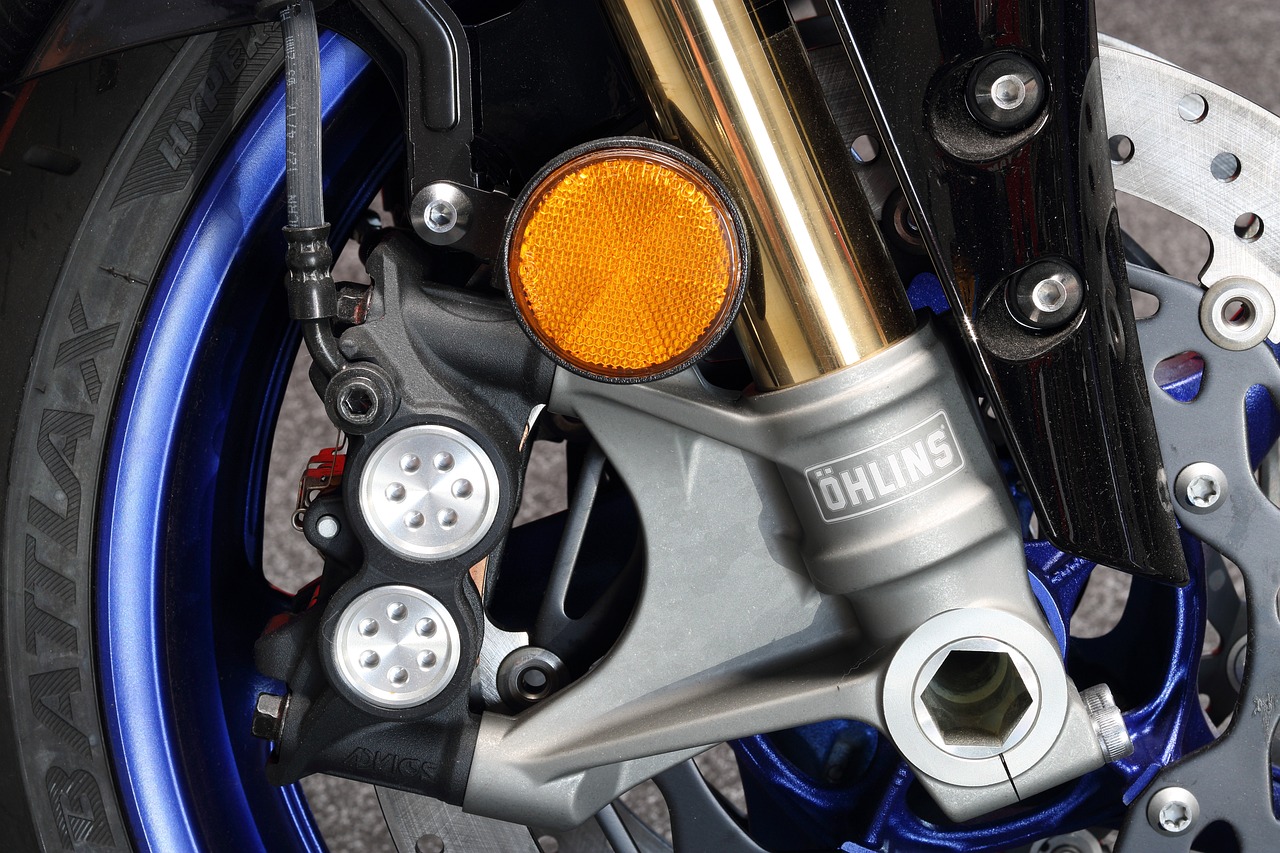
Integration with Autonomous Systems
In the ever-evolving landscape of modern warfare, the integration of advanced sensors with autonomous systems has emerged as a game changer. Imagine a battlefield where drones equipped with cutting-edge sensors can autonomously navigate hostile territories, gather intelligence, and even engage in combat—all while minimizing human risk. This synergy between sensors and autonomous systems not only enhances operational capabilities but also redefines how military forces approach reconnaissance and combat missions.
At the heart of this integration lies the ability of autonomous vehicles, such as drones and ground robots, to process sensor data in real-time. These machines can utilize various sensors—ranging from radar to infrared—to detect enemy positions, monitor troop movements, and assess environmental conditions. For instance, a drone equipped with infrared sensors can identify heat signatures, allowing it to locate enemy combatants even in low visibility conditions. This capability is crucial for surveillance and target acquisition, providing military commanders with a comprehensive view of the battlefield.
Moreover, the integration of sensors with autonomous systems enhances decision-making speed. In traditional warfare, human operators often had to sift through vast amounts of data, which could lead to delays in response times. However, with advanced sensors feeding real-time data to autonomous systems, decisions can be made almost instantaneously. This rapid processing capability can be the difference between success and failure in critical military operations. For example, a drone can instantly relay information about enemy troop movements back to command, allowing for quicker tactical adjustments.
Another significant advantage is the reduction of human casualties. By deploying autonomous systems that can operate in high-risk environments, militaries can keep their personnel out of harm's way. This is particularly important in scenarios like urban warfare, where the risk of ambushes is high. Drones can scout ahead, identify threats, and even engage targets without putting soldiers directly in danger. This not only preserves lives but also allows for more aggressive tactics, as the fear of losing personnel is mitigated.
However, it’s essential to recognize that the integration of advanced sensors with autonomous systems is not without its challenges. The complexity of these technologies requires sophisticated training for operators, and there is a constant need to ensure that the systems are secure from cyber threats. Additionally, the reliance on technology raises questions about the ethical implications of autonomous warfare. As we push the boundaries of what these systems can do, we must also consider the moral responsibilities that come with their deployment.
In conclusion, the integration of advanced sensors with autonomous systems is revolutionizing modern warfare. By enhancing situational awareness, speeding up decision-making processes, and reducing human casualties, these technologies are not just tools of war; they are reshaping military strategy as we know it. As we look to the future, the potential for further advancements in this area is vast, promising even more profound changes in how wars are fought and won.
- What are advanced sensors? Advanced sensors are sophisticated devices used to detect and analyze various environmental conditions, including radar, infrared, and acoustic sensors.
- How do autonomous systems enhance military operations? Autonomous systems can operate without human intervention, allowing for faster data processing, reduced risk to personnel, and improved reconnaissance capabilities.
- What are the ethical concerns surrounding the use of autonomous systems in warfare? Ethical concerns include the potential for misuse, the implications of making life-and-death decisions without human oversight, and issues related to accountability in the event of a failure.
- Can autonomous systems operate in all environments? While autonomous systems are designed to function in various environments, their effectiveness can be impacted by factors such as weather, terrain, and the presence of countermeasures.

Real-time Data Processing and Analysis
In the fast-paced world of modern warfare, real-time data processing is not just a luxury; it's a necessity. Imagine being on a battlefield where every second counts. The ability to analyze and act on information as it comes in can mean the difference between victory and defeat. Advanced sensors play a pivotal role in this process, collecting vast amounts of data from various sources, including aerial surveillance, ground sensors, and even satellite feeds. This data must be processed quickly and accurately to inform military decisions.
One of the key advantages of real-time data processing is situational awareness. With advanced sensors, military personnel can gain a comprehensive view of the battlefield. For instance, radar systems can detect enemy movements, while infrared sensors can identify hidden threats in low visibility conditions. When this data is processed in real-time, commanders can make informed decisions, deploying resources where they are needed most. The integration of artificial intelligence (AI) further enhances this capability, allowing for predictive analytics that can forecast enemy actions based on historical data patterns.
Moreover, the efficiency of real-time data analysis can be illustrated through the use of data fusion techniques. This involves combining data from multiple sensor sources to create a unified picture of the operational environment. For example:
| Sensor Type | Data Collected | Purpose |
|---|---|---|
| Radar | Movement detection | Identify enemy positions |
| Infrared | Heat signatures | Locate hidden threats |
| Acoustic | Sound detection | Monitor enemy activities |
This table highlights how different sensors contribute to a comprehensive understanding of the battlefield. By processing this data in real-time, military forces can react swiftly to emerging threats, coordinate attacks, and allocate resources more effectively.
However, the challenge lies in the sheer volume of data generated. Advanced algorithms and processing units are essential to filter out noise and focus on actionable intelligence. This is where technology meets human expertise; analysts must interpret the processed data, turning raw numbers into strategic insights. Human intuition combined with machine efficiency creates a powerful synergy that enhances decision-making on the battlefield.
In conclusion, the ability to process and analyze data in real-time transforms how military operations are conducted. It not only improves response times but also enhances the overall effectiveness of military strategies. As technology continues to advance, we can expect even greater improvements in how data is utilized in warfare, making real-time data processing an indispensable component of modern military operations.
- What are advanced sensors? Advanced sensors are sophisticated devices that collect data from the environment, such as radar, infrared, and acoustic sensors, to enhance situational awareness in military operations.
- How does real-time data processing impact military decisions? Real-time data processing allows military personnel to analyze information as it comes in, enabling quicker and more informed decision-making, which is crucial in fast-paced combat situations.
- What is data fusion? Data fusion is the process of combining data from multiple sensor sources to create a comprehensive understanding of the battlefield, allowing for more effective strategies and responses.
- Can AI improve real-time data analysis? Yes, artificial intelligence can enhance real-time data analysis by automating data processing, identifying patterns, and providing predictive analytics to forecast enemy actions.
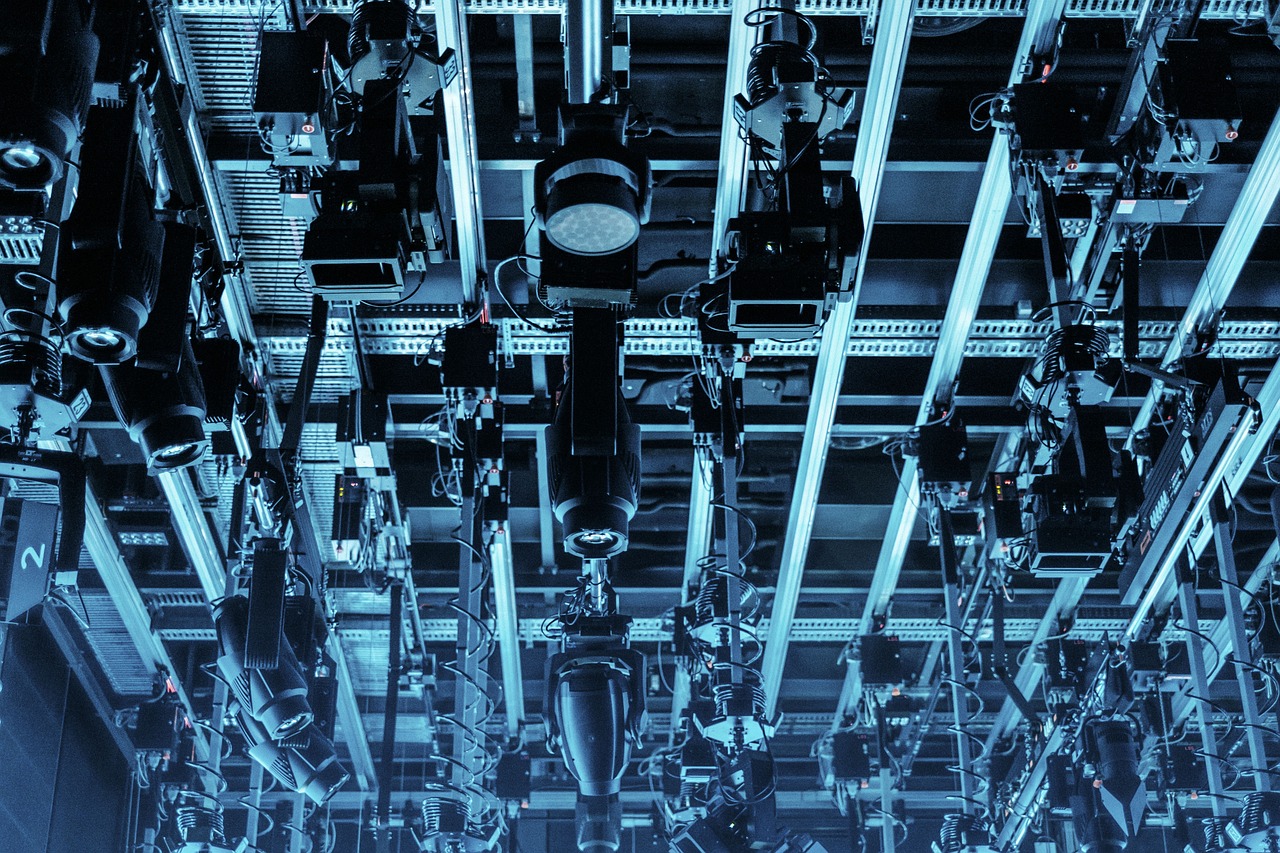
Challenges and Limitations
While the integration of advanced sensors in modern warfare has revolutionized military operations, it is crucial to recognize the that accompany this technology. One major concern is cybersecurity threats. As military systems become increasingly reliant on interconnected networks, they become potential targets for cyberattacks. Hackers could exploit vulnerabilities, gaining unauthorized access to sensitive information or even taking control of military assets. This not only jeopardizes operational effectiveness but also raises serious questions about the safety of personnel and equipment.
Another significant limitation is the impact of environmental factors on sensor performance. Weather conditions, such as heavy rain, fog, or extreme temperatures, can severely hinder the functionality of sensors. For instance, radar systems may struggle to detect targets in adverse weather, while infrared sensors can be less effective in hot climates where background heat levels are elevated. These environmental challenges can lead to data inaccuracies that could have dire consequences on the battlefield.
Moreover, the sheer volume of data generated by advanced sensors poses another challenge. Military analysts are often inundated with information, making it difficult to discern what is relevant and actionable. This data overload can lead to slower decision-making processes, which is counterproductive in high-stakes situations where every second counts. To combat this, military organizations must invest in sophisticated data processing systems that can filter and prioritize information efficiently.
Additionally, the reliance on technology raises ethical considerations. The deployment of advanced sensors can lead to issues regarding privacy and surveillance, especially in conflict zones where civilian populations may be affected. There is a fine line between ensuring national security and infringing on individual rights, and military leaders must navigate this complex landscape carefully.
Finally, the cost associated with developing and maintaining advanced sensor systems can be prohibitive. Governments must allocate substantial budgets for research, development, and training personnel to operate these sophisticated technologies. This financial burden can divert resources from other critical areas, potentially impacting overall military readiness.
In summary, while advanced sensors offer remarkable benefits in enhancing situational awareness and operational efficiency, they are not without their challenges. Cybersecurity threats, environmental limitations, data overload, ethical dilemmas, and financial constraints are all factors that military organizations must address to fully leverage the potential of this transformative technology.
- What are the main cybersecurity threats to advanced sensors? Cybersecurity threats include hacking attempts that could compromise sensitive data or take control of military assets.
- How do environmental factors affect sensor performance? Adverse weather conditions can hinder the functionality of sensors, leading to data inaccuracies and operational challenges.
- What is data overload, and why is it a problem? Data overload occurs when analysts receive more information than they can process, which can delay decision-making in critical situations.
- What ethical concerns arise from the use of advanced sensors? Ethical concerns include privacy issues and the potential for surveillance of civilian populations in conflict zones.
- Are advanced sensors expensive to maintain? Yes, the development and maintenance of advanced sensor systems can be costly, impacting military budgets and resource allocation.

Impact on Strategic Planning
The integration of advanced sensors into military operations has profoundly transformed strategic planning. Gone are the days when military leaders relied solely on intuition or outdated intelligence reports. Today, real-time data from advanced sensors provides a clearer, more accurate picture of the battlefield, enabling commanders to make informed decisions that can significantly alter the course of engagements.
At the heart of this transformation is the ability to gather and analyze vast amounts of data quickly. Advanced sensors, such as radar, infrared, and acoustic sensors, collect information on enemy movements, environmental conditions, and potential threats. This data is then processed using sophisticated algorithms that can identify patterns and predict outcomes. For instance, a military strategist can assess troop movements and adjust their tactics accordingly, all within moments of receiving new intelligence.
Moreover, the accuracy of this intelligence plays a critical role in shaping tactical decisions. With precise information at their fingertips, military leaders can allocate resources more effectively, ensuring that troops are deployed where they are most needed. This not only enhances operational efficiency but also minimizes casualties, as forces can engage threats with a higher degree of certainty.
However, the impact of advanced sensors on strategic planning extends beyond immediate tactical advantages. They also influence long-term military strategies. By analyzing data trends over time, military planners can identify potential hotspots for conflict, assess the effectiveness of previous operations, and develop strategies that preemptively address emerging threats. This proactive approach is akin to a chess player anticipating their opponent's moves several steps ahead, allowing for a more comprehensive and dynamic military strategy.
To illustrate this point, consider the following table that outlines the key benefits of advanced sensors in strategic planning:
| Benefit | Description |
|---|---|
| Enhanced Situational Awareness | Real-time data provides a comprehensive view of the battlefield. |
| Improved Decision-Making | Data-driven insights allow for timely and informed tactical decisions. |
| Resource Optimization | Efficient allocation of troops and equipment based on accurate intelligence. |
| Long-Term Strategy Development | Data analysis aids in identifying future conflict zones and planning accordingly. |
Despite these advantages, it is essential to recognize that reliance on advanced sensors also introduces certain vulnerabilities. For instance, the accuracy of the data depends on the integrity of the sensors themselves. If compromised, the consequences could be dire. Furthermore, the potential for information overload can lead to analysis paralysis, where too much data hinders decision-making rather than facilitating it.
In conclusion, the impact of advanced sensors on strategic planning in modern warfare is both profound and multifaceted. While they offer unprecedented advantages in terms of situational awareness and decision-making, military leaders must remain vigilant about the challenges and limitations that accompany these technological advancements. As we move forward, the ability to effectively integrate sensor data into strategic planning will be crucial in navigating the complexities of modern warfare.
- How do advanced sensors improve military strategy?
Advanced sensors provide real-time data that enhances situational awareness, allowing for informed decision-making and resource optimization. - What are the main types of advanced sensors used in warfare?
Common types include radar, infrared, and acoustic sensors, each serving unique functions on the battlefield. - What challenges do advanced sensors face?
Challenges include cybersecurity threats, data overload, and the potential for compromised sensor integrity. - How does data from advanced sensors influence long-term military planning?
Data analysis helps military planners identify potential conflict zones and develop proactive strategies to address emerging threats.

Ethical Considerations in Sensor Deployment
As we dive into the world of advanced sensors in warfare, it's crucial to shine a light on the ethical considerations that accompany their deployment. These high-tech marvels, while revolutionary, bring with them a host of moral dilemmas that can’t be ignored. For instance, how do we balance the need for enhanced surveillance and intelligence with the right to privacy? In a world where sensors can detect movements and gather data from miles away, the line between national security and personal privacy becomes increasingly blurred.
Moreover, the potential for misuse of these technologies raises significant concerns. Imagine a scenario where sensor data is not just used for military operations but is also exploited for surveillance of civilians. This could lead to a state of constant monitoring, reminiscent of dystopian fiction. The implications of such actions could be profound, affecting not just individuals but entire societies. The risk of governments or rogue entities utilizing these advanced sensors for oppressive purposes cannot be overlooked.
Another pressing ethical issue is the accountability associated with decisions made based on sensor data. If a military operation goes awry due to faulty sensor information, who is responsible? The operators? The developers? This ambiguity can lead to a dangerous precedent, where the reliance on technology overshadows human judgment. As we integrate these systems into our military frameworks, we must also establish clear guidelines and accountability measures to ensure that ethical standards are upheld.
Furthermore, we must consider the impact on soldiers themselves. The reliance on advanced sensors can lead to a detachment from the battlefield, making warfare feel more like a video game than a real-life conflict. This detachment can have psychological consequences, not only for those deploying the technology but also for those on the receiving end of its surveillance. As we push the boundaries of what is possible, we must also ensure that we are not sacrificing the humanity of our military personnel.
To navigate these complex ethical waters, a multi-faceted approach is necessary. This includes:
- Establishing robust ethical guidelines for the development and use of sensor technologies.
- Promoting transparency in how sensor data is collected and utilized.
- Engaging in public discourse about the implications of advanced warfare technologies.
- Investing in training for military personnel to understand the ethical dimensions of their operations.
In essence, while advanced sensors offer remarkable capabilities that can enhance military operations, they also pose significant ethical challenges that require careful consideration. As we move forward, it is imperative that we address these concerns head-on, ensuring that our pursuit of technological advancement does not come at the cost of our moral compass.
- What are the main ethical concerns regarding advanced sensors in warfare?
The main concerns include privacy rights, accountability for decisions made based on sensor data, and the potential for misuse in civilian surveillance. - How can military organizations ensure ethical use of sensor technology?
By establishing clear ethical guidelines, promoting transparency, and engaging in public discourse about the implications of these technologies. - What impact do advanced sensors have on soldiers?
They can create a sense of detachment from the battlefield, which may lead to psychological consequences for military personnel.
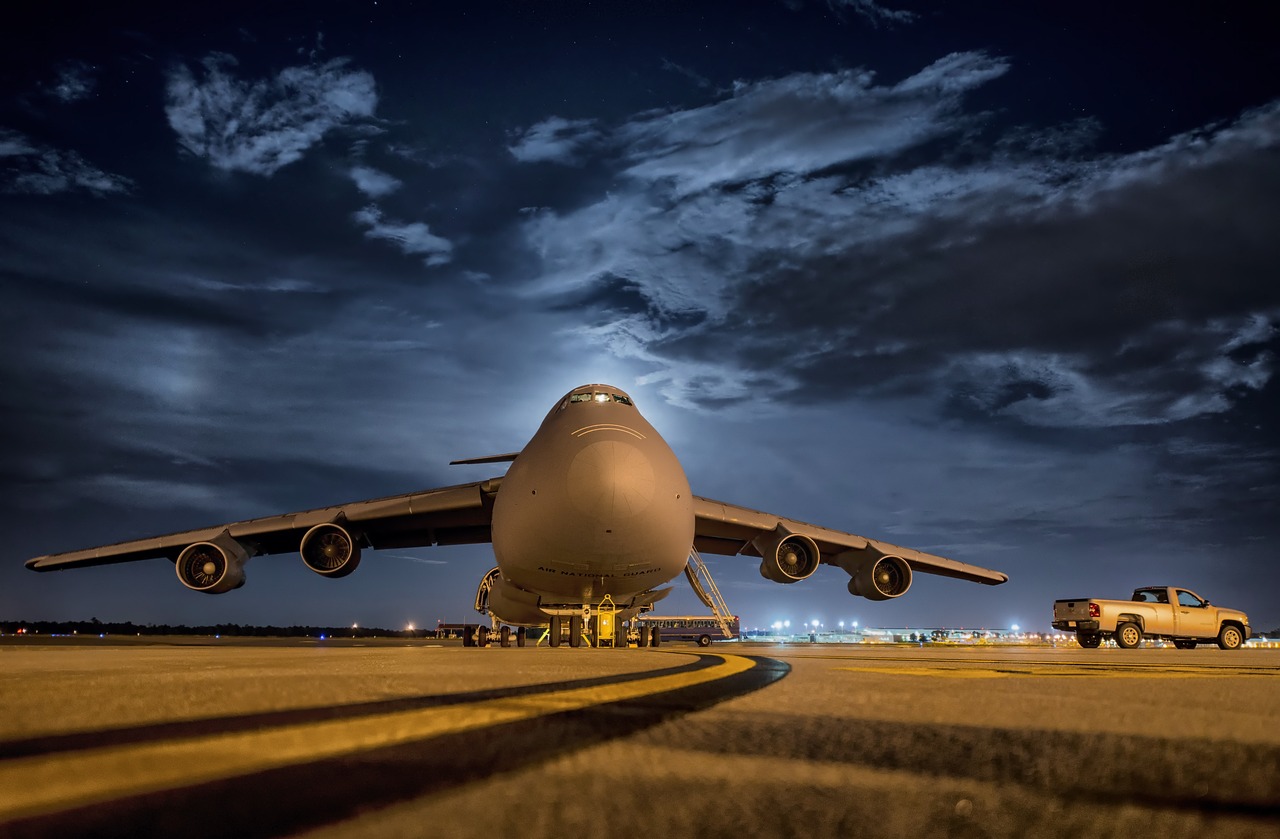
The Future of Sensor Technology in Warfare
The landscape of modern warfare is constantly evolving, and as we look to the future, sensor technology is poised to play a pivotal role in shaping military strategies and operations. Imagine a battlefield where every movement is monitored, every sound is analyzed, and every decision is backed by real-time data. This is not just a distant dream; it's the reality that advanced sensors are creating. As technology continues to advance at an unprecedented pace, the future of sensor technology in warfare promises to be both exciting and complex.
One of the most significant trends on the horizon is the integration of artificial intelligence (AI) with sensor technology. By leveraging AI, military forces can analyze vast amounts of data collected from various sensors, enabling them to make quicker and more informed decisions. For instance, AI algorithms can process data from radar, infrared, and acoustic sensors to identify potential threats in real-time, allowing commanders to respond proactively rather than reactively. This fusion of AI and sensors not only enhances situational awareness but also minimizes the risk of human error, which can be critical in high-stakes environments.
Moreover, the development of miniaturized sensors is set to revolutionize how military operations are conducted. As sensors become smaller and more efficient, they can be deployed in a variety of platforms, from drones to infantry gear. These compact sensors can gather intelligence in areas that were previously inaccessible or too dangerous for human personnel. For example, imagine a small drone equipped with advanced sensors flying over hostile territory, collecting crucial data without putting soldiers at risk. This capability will not only enhance reconnaissance missions but also provide a tactical advantage in combat situations.
Another exciting prospect is the advancement of networked sensor systems. In the future, we can expect sensors to be interconnected, creating a comprehensive battlefield network. This interconnectedness will allow for seamless communication and data sharing among various military units. Picture a scenario where ground troops, air support, and naval forces are all linked through a shared sensor network, each receiving real-time updates on enemy movements and environmental conditions. Such integration will enable a more coordinated and effective response, ultimately leading to better mission outcomes.
However, with these advancements come challenges. Cybersecurity will be a significant concern as military forces become increasingly reliant on interconnected sensor systems. The potential for cyberattacks on these systems could compromise sensitive data and operational integrity. Therefore, investing in robust cybersecurity measures will be crucial to protect military assets and maintain operational effectiveness.
In addition, ethical considerations surrounding the use of advanced sensors in warfare will continue to be a hot topic. As military forces gain access to more sophisticated surveillance capabilities, questions about privacy and the potential for misuse will arise. Striking a balance between operational efficiency and ethical responsibility will be essential in guiding the future deployment of sensor technology.
In conclusion, the future of sensor technology in warfare is filled with potential. As we embrace advancements in AI, miniaturization, and networked systems, the military landscape will undergo a transformation that enhances operational capabilities and strategic planning. However, it is imperative to navigate the accompanying challenges and ethical dilemmas with care. The next decade will undoubtedly see sensor technology redefine how wars are fought, making it an exciting time for military innovation.
- What role does AI play in sensor technology for warfare?
AI enhances the analysis of data collected by sensors, allowing for quicker and more accurate decision-making in military operations. - How do miniaturized sensors impact military operations?
Miniaturized sensors enable deployment in various platforms, providing intelligence in hard-to-reach areas and reducing risk to personnel. - What are the cybersecurity risks associated with advanced sensor systems?
As systems become interconnected, they are vulnerable to cyberattacks, which can compromise sensitive military data and operational effectiveness. - What ethical concerns arise from the use of advanced sensors in warfare?
Concerns include privacy issues and the potential for misuse of surveillance capabilities, necessitating a balance between operational needs and ethical responsibility.
Frequently Asked Questions
- What are advanced sensors in modern warfare?
Advanced sensors are sophisticated devices that gather and analyze data to enhance situational awareness on the battlefield. They include technologies like radar, infrared, and acoustic sensors, which help military forces detect, track, and engage targets more effectively.
- How have sensors evolved over time?
The evolution of sensor technology has been marked by significant advancements, starting from basic detection systems to highly complex, integrated networks that provide real-time data. This progression has enabled military forces to adapt to changing warfare dynamics and improve their operational capabilities.
- What role do sensors play in autonomous systems?
Sensors are crucial for the functionality of drones and autonomous vehicles in military operations. They provide the necessary data for navigation, target identification, and mission execution, allowing these systems to operate with minimal human intervention while enhancing reconnaissance and combat effectiveness.
- How does real-time data processing impact military operations?
Real-time data processing allows military commanders to make quick, informed decisions based on the latest intelligence. Advanced sensors contribute to this by continuously gathering and analyzing data, which helps improve operational efficiency and reduces response times in critical situations.
- What challenges do advanced sensors face?
Despite their advantages, advanced sensors encounter several challenges, including cybersecurity threats that could compromise their functionality and environmental factors that can hinder their performance. These limitations can impact military operations and require ongoing innovation and adaptation.
- How do sensors influence military strategy?
Accurate data from advanced sensors plays a pivotal role in shaping military strategies. By providing reliable intelligence, they help military leaders make informed tactical decisions and develop long-term plans that align with the evolving landscape of warfare.
- What ethical considerations are associated with sensor deployment?
The use of advanced sensors in warfare raises various ethical dilemmas, such as privacy concerns and the potential for misuse in combat scenarios. These issues necessitate careful consideration and regulation to ensure that technology is used responsibly and ethically.
- What is the future of sensor technology in warfare?
The future of sensor technology in warfare is expected to bring even more advancements, including enhanced capabilities for data fusion and artificial intelligence integration. These developments will likely reshape military strategies and capabilities, leading to more efficient and effective operations.

















